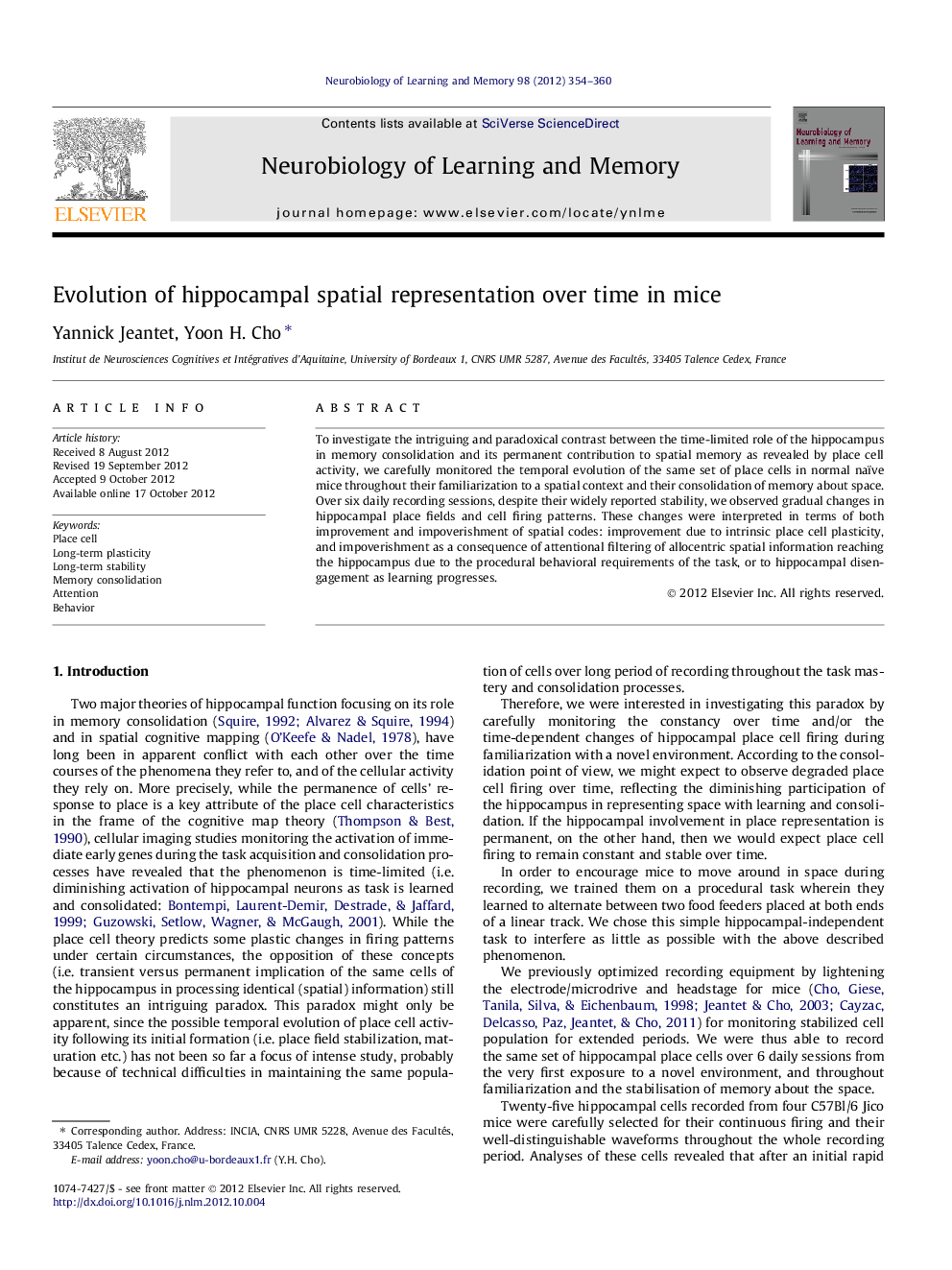| Article ID | Journal | Published Year | Pages | File Type |
|---|---|---|---|---|
| 936675 | Neurobiology of Learning and Memory | 2012 | 7 Pages |
To investigate the intriguing and paradoxical contrast between the time-limited role of the hippocampus in memory consolidation and its permanent contribution to spatial memory as revealed by place cell activity, we carefully monitored the temporal evolution of the same set of place cells in normal naïve mice throughout their familiarization to a spatial context and their consolidation of memory about space. Over six daily recording sessions, despite their widely reported stability, we observed gradual changes in hippocampal place fields and cell firing patterns. These changes were interpreted in terms of both improvement and impoverishment of spatial codes: improvement due to intrinsic place cell plasticity, and impoverishment as a consequence of attentional filtering of allocentric spatial information reaching the hippocampus due to the procedural behavioral requirements of the task, or to hippocampal disengagement as learning progresses.
► Hippocampal place fields stabilise rapidly when exposed to a novel environment. ► Hippocampal place fields also refine progressively with repeated exposure. ► These changes are accompanied by diminished global firing rates. ► These progressive changes might reflect both improvement and impoverishment of spatial codes.
